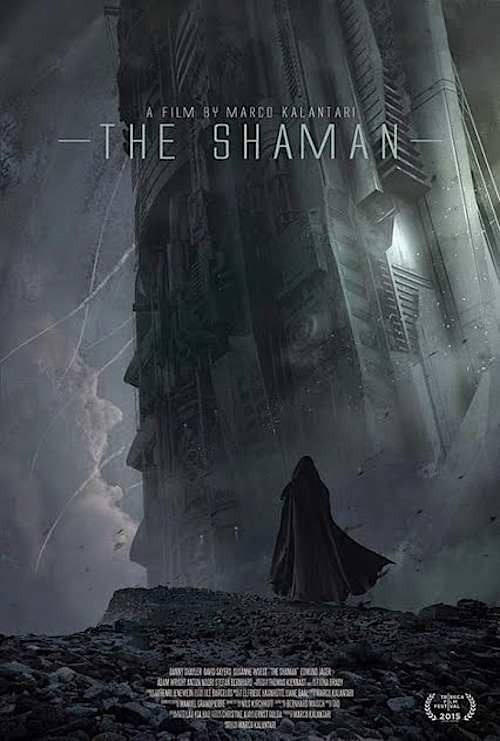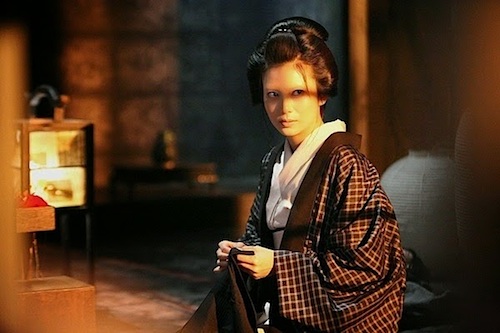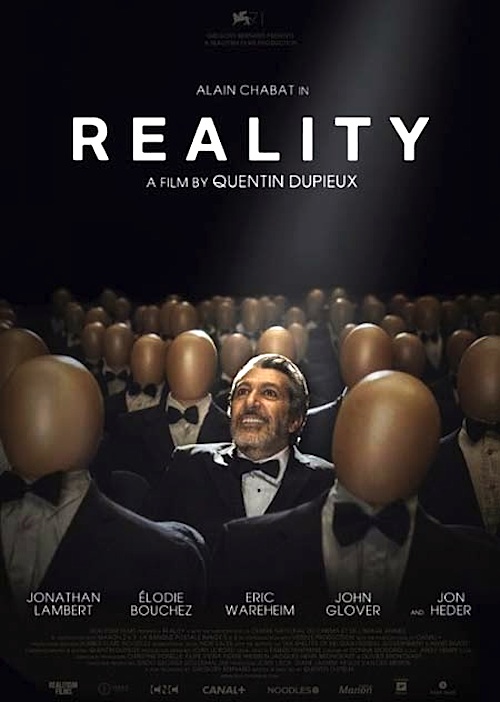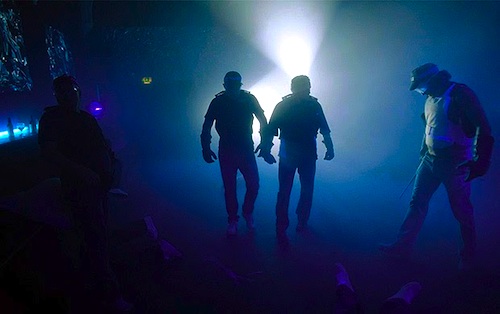By Joe Bendel. Imagine the Terminator franchise, but with metaphysics replacing artificial technology. In the year 2204, humanity has been in a state of constant war for seventy-three years. Not content simply developing the latest lethal hardware, the warring factions have also weaponized shamanism. Great battles are joined in the Netherworld, where shamans try to convert or kill the souls of machines existing in our plane of reality. One such spiritual intermediary will face his most dangerous mission yet in Marco Kalantari’s epic short film The Shaman, which screened at the 2015 Tribeca Film Festival (as part of the Interference programming block).
 It might be a short film, but it is long on concept. Clearly, writer-director-producer-editor Kalantari can only establish the basic essentials of this shamanistic dystopia in the film’s mere eighteen minutes. Through the help of sympathetic musical accompaniment, shamans like our unnamed titular character are able to cross over to the realm where the souls of machines exist in corporal form, at least for the duration of the tune. The Shaman’s target is the soul of the Colossus, a devastating new Death Star-like battle droid. Unfortunately, the Colossus seems to be expecting him. Nevertheless, the Shaman insists on an unusually short composition, perhaps out of respect for Kalantari’s budget.
It might be a short film, but it is long on concept. Clearly, writer-director-producer-editor Kalantari can only establish the basic essentials of this shamanistic dystopia in the film’s mere eighteen minutes. Through the help of sympathetic musical accompaniment, shamans like our unnamed titular character are able to cross over to the realm where the souls of machines exist in corporal form, at least for the duration of the tune. The Shaman’s target is the soul of the Colossus, a devastating new Death Star-like battle droid. Unfortunately, the Colossus seems to be expecting him. Nevertheless, the Shaman insists on an unusually short composition, perhaps out of respect for Kalantari’s budget.
Frankly, a short film with this level of special effects would have been unimaginable ten years ago. Kalantari creates a sinister futuristic landscape of enormous scope that is initially maybe a bit reminiscent of the Terminator, but he takes it in a wholly original direction. If this short was produced in the hope it will lead to an expanded feature, it is likely to win the requisite backing, because in this case, seeing is believing.
The very idea of a massive space battles also being waged on the subconscious level and within the soul is heady stuff and even a little disturbing. It is a rich vein Kalantari should be able to profitably mine over multiple films. Hopefully, he will bring back Susanne Wuest, because she is terrific as the Soul of Colossus. He also gets a key assist from cinematographer Thomas Kiennast (who also lensed the moody strudel western Dark Valley). He gives this universe a darkly distinctive look, while Kalantari blends the trappings of science fiction and fantasy quite effectively.
Minute for minute, The Shaman has considerably more ideas than most big budget genre movies. Easily the best science fiction at this year’s Tribeca Film Festival, it is prime candidate for later genre fests like Fantasia. Highly recommended, indie sf fans should definitely keep an eye out for it.
LFM GRADE: A-
Posted on May 6th, 2015 at 9:55pm.




